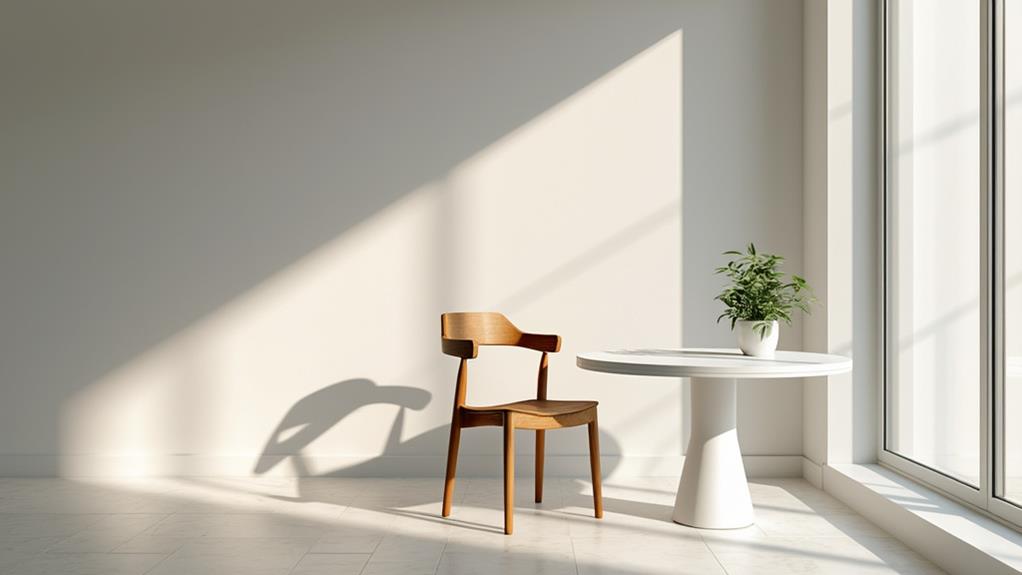Achieving calm through minimalism starts with decluttering, which reduces overwhelm and enhances order by simplifying our surroundings. By intentionally choosing design elements that align with our aesthetic goals, we emphasize functionality and create harmonious spaces. Clean lines and neutral colors like whites and beiges promote tranquility, while optimizing natural light showcases these design choices, cultivating an airy environment. The focus on space and functionality guarantees that each item serves a purpose, minimizing clutter. This approach not only supports mental well-being by fostering clarity and focus but also aligns with sustainable living practices to reduce our environmental impact. Such strategies offer deeper insights into minimalist living.
Table of Contents
ToggleEmbrace Decluttering
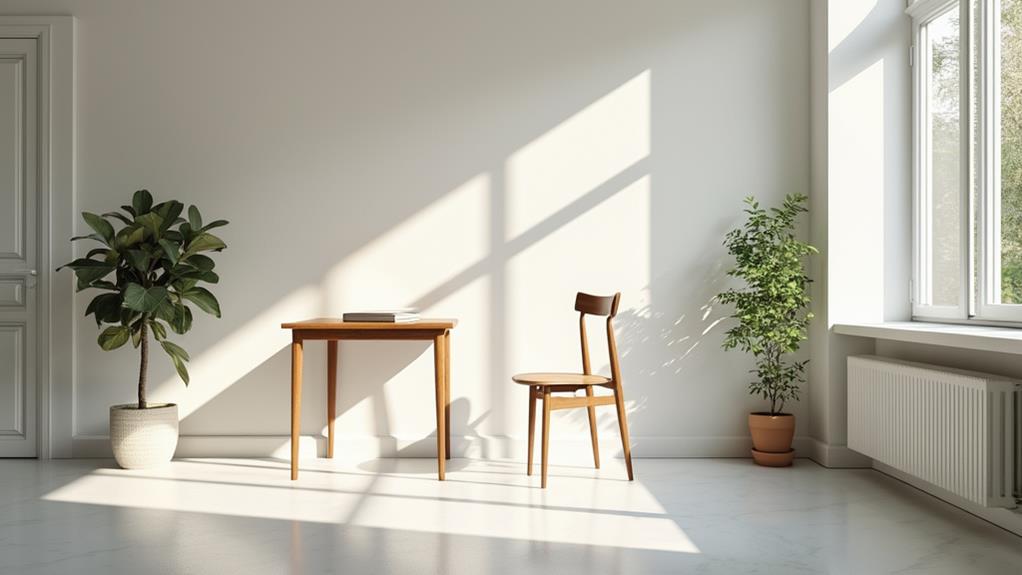
In today's fast-paced world, embracing decluttering can be our secret weapon for achieving a sense of calm and order.
Minimalism encourages us to simplify our environments by systematically eliminating distractions. By focusing on one area at a time, we can reduce overwhelm and streamline our belongings through a keep, donate, or discard process.
This approach fosters a clean, organized environment that promotes clarity and serenity. Regular assessments of our possessions help prevent future clutter accumulation, ensuring our living spaces remain peaceful.
Intentionality with our belongings enhances their value, allowing us to find joy in simplicity. A minimalist mindset also encourages intentional consumption, aligning our habits with our desire for a harmonious living space.
Adopting these practices can greatly enhance our well-being.
Intentional Design Choices
When it comes to crafting a serene environment, intentional design choices play an essential role in achieving a minimalist lifestyle.
We must carefully consider every item we bring into our spaces, ensuring it serves a purpose and aligns with our aesthetic goals. This means selecting furniture and decor that offer both functionality and visual appeal, contributing to a harmonious setting.
By prioritizing multi-purpose items, we can maximize utility and maintain order. Built-in storage solutions, like those found in sofas or coffee tables, help keep spaces organized without sacrificing style.
Additionally, an optimized layout promotes easy movement and accessibility, allowing us to navigate our environment smoothly. Each decision should reflect our commitment to a minimalist mindset, fostering clarity and tranquility.
Clean Lines and Colors
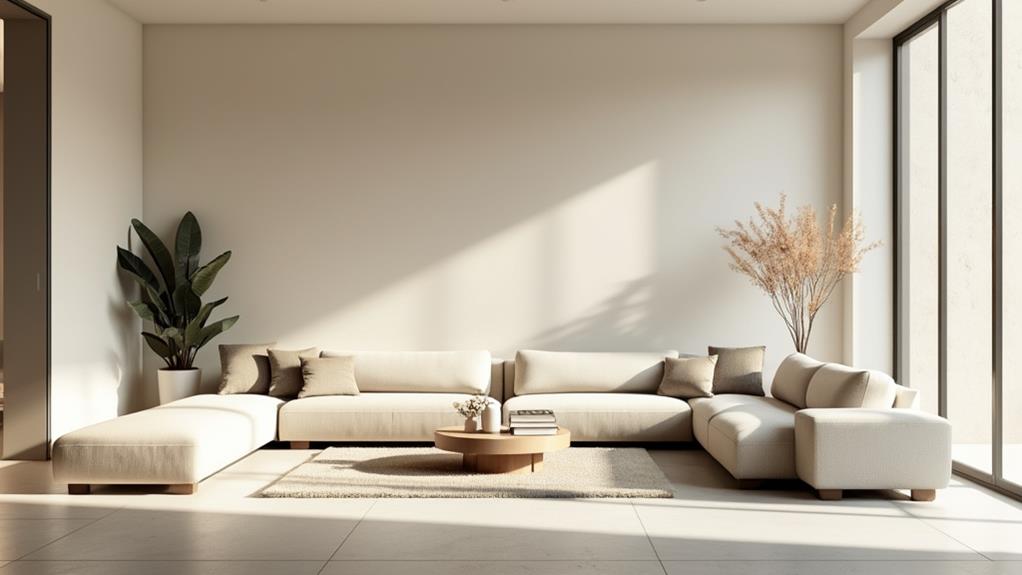
As we thoughtfully curate our surroundings through intentional design, the elegance of clean lines and a carefully chosen color palette becomes apparent.
Clean lines in minimalist design signify simplicity and order, offering a sense of tranquility and focus. By selecting furniture and decor with straight edges and minimal embellishments, we enhance visual appeal while maintaining functionality.
Neutral colors such as whites, grays, and beiges serve as a serene, timeless backdrop, promoting an airy ambiance. These hues evoke tranquility, allowing essential design elements to shine without distraction.
When we emphasize clean lines and neutral palettes, we create spaces that are both calming and visually cohesive. This approach highlights essential elements and guarantees our environments remain uncluttered and harmonious.
Optimize Natural Light
Natural light is a transformative element in minimalist design, enhancing the perception of openness and tranquility in our spaces. By maximizing natural light, we can create an environment that feels more expansive and serene.
We should consider the strategic use of windows, skylights, and glass doors to invite more sunlight into our homes. These elements not only brighten our spaces but also improve mood, productivity, and sleep quality.
Avoiding heavy curtains and opting for sheer or no window coverings allows unobstructed light flow, amplifying its benefits. Additionally, light, neutral colors on walls and furnishings reflect sunlight, further promoting an airy atmosphere.
This approach facilitates a visual flow, emphasizing simplicity and minimizing distractions, aligning perfectly with minimalist principles.
Space and Functionality
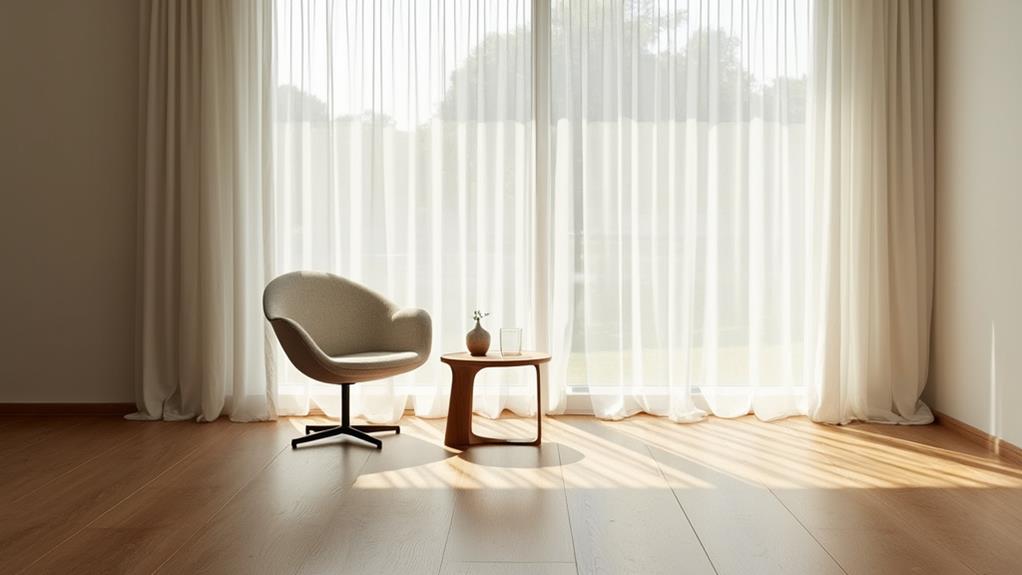
Space and functionality are at the heart of minimalist design, where every element serves a purpose and enhances our living experience.
By prioritizing functionality, we guarantee that our spaces aren't only beautiful but also practical. Furniture and decor should be selected with a dual focus on utility and aesthetics, maximizing space usage.
Multi-purpose items, such as storage-integrated furniture, contribute to organization and efficiency. An optimized layout promotes easy movement, guaranteeing accessibility throughout our living areas.
Clean lines and strategic placement of furniture further support a functional environment. This thoughtful approach allows us to create spaces that are visually appealing without sacrificing practicality.
Mental Well-Being Benefits
Embracing minimalism can greatly enhance our mental well-being by fostering an environment of calm and clarity. By eliminating unnecessary clutter, we reduce distractions, allowing our minds to focus and find peace.
Simplified spaces aren't just aesthetically pleasing; they support mental clarity by reducing overstimulation. As we intentionally choose what to keep, we cultivate a sense of order and control over our surroundings.
This practice not only streamlines our daily routines but also diminishes decision fatigue. Additionally, organized spaces facilitate maintenance, reducing stress associated with cleaning and upkeep.
Sustainable Living Practices
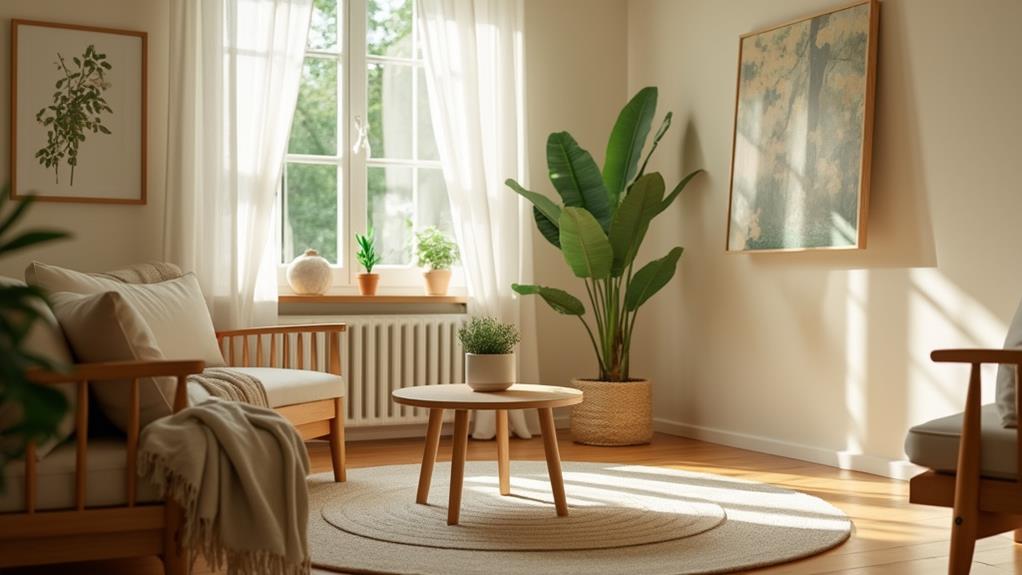
In our journey towards minimalism, we can't overlook the importance of sustainable living practices. Embracing sustainability complements minimalism by reducing our environmental impact and promoting resource efficiency.
By choosing quality over quantity, we extend the lifespan of our belongings, minimizing waste. Additionally, we can adopt practices like recycling, composting, and using renewable energy sources to further align our lifestyle with sustainable principles.
Mindful consumption means selecting products with minimal packaging or opting for reusable alternatives. It also involves supporting companies that prioritize eco-friendly methods.
These steps foster an ethical approach to living, ensuring that our minimalist lifestyle contributes positively to our planet. Ultimately, integrating sustainability into minimalism not only benefits the environment but also enhances our overall well-being.

